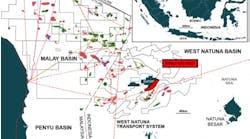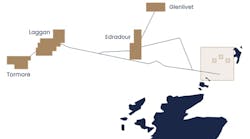Cold-pad has developed a new technology that involves the use of bonded composite reinforcement to repair corroded FPSO hulls. The ColdShield system, which won GEP-AFTP’s Innovation Prize last year, is applied in situ, without the need for hot work such as welding, and without disruption to production operations.
Unlike conventional composite repairs, ColdShield is permanent and is an alternative to the “classic crop & renew” approach, according to Cold-pad CEO Jean-Philippe Court who worked for 20 years as a structural engineer in the offshore industry and was part of Total’s team for the Rosa project in block 17 offshore Angola and the live offshore revamp of the host Girassol FPSO in the early 2000s. This is when he started to see an interest in cold repairs such as bonded composite reinforcements.
Development of the ColdShield process followed a three-year R&D program in partnership with Total, IFP-Energies nouvelles (IFPEN), and three privately and publicly owned laboratories in France.
Conventional repairs of corroded steel structures are typically performed offshore via steel cutting and welding. But this can be a constraint in a flammable or explosive environment, Court said. “An FPSO is particularly sensitive to hot work because of its crude oil storage function. For obvious safety reasons, this makes it very difficult to weld close to the oil storage area, and in the worst cases can necessitate shutting down the entire facility. If you need to repair the oil tank itself, you would normally have to empty and clean it out in order to make safe conditions for welders. You may even need to empty the adjacent tanks. This process can take weeks or even months, whereas with ColdShield, the whole process can be conducted by four people over two days, without disturbing operational activities. ”
Offshore operators have been seeking an alternative cold work process for some time, Court said, hence the interest in bonded composite reinforcements. The technique has been in use in aerospace applications for decades, where composite patches and epoxy resin are applied wet layered to reinforce aeroplane components. However, application must be performed in a controlled atmosphere. “Laboratory conditions with 50% or relative humidity are ideal,” Court added, “and the operating envelope can be stretched up to 70%. Above that level, you would not perform this type of composite repair. Offshore, the weather window is extremely limited as the humidity is usually 70-100%.”
Once installed, conventional composite reinforcements become exposed to the marine environment which ultimately leads to degradation - scientific publications as well as tests of samples have confirmed this drop in mechanical performances following prolonged wet exposure. “Lack of control during installation and exposed service life lead to generally insufficient performance in terms of reliability,” Court said. “That is what has mainly prevented the offshore industry from using bonded composites reinforcement for steel structures until now.”
Total, which has anticipated the corrosion-damaged plating on various FPSOs, agreed to fund development of ColdShield, a prefabricated reinforcement. “It is a complex product made of high standard materials, carefully selected polymers, shielded by super-duplex alloy and a low-hardness fluorinated silicon joint,” Court explained. “Production techniques applied by the aerospace industry are required to attain the best quality.”
The site installation procedure is as follows, he continued: “The process has been designed and gradually improved to attain the robustness needed for a reliable bonding in an offshore environment. First, a qualified surface preparation is applied to deliver a sound surface state for a load transfer through pure adhesion. The surface preparation selected is similar to the one used for site painting of an operating FPSO hull, which is pretty standard.
“Next, the prefabricated pad is placed onto the prepared area, allowing vacuum-assisted injection to start, performed using a specially-developed injection machine. Prior to resin injection, a drying process is applied to achieve an ultra-low humidity level (i.e. lower than 1% of relative humidity) for the best adhesion performance. This can be done even when the outside atmospheric conditions are saturated (i.e. 100% of relative humidity).
“All implemented automation systems of the injection machine are designed to secure a perfectly repeatable process for guaranteed performance in line with industry standards. As all parameters are automatically recorded during the injection process, a full installation report can be delivered instantly in electronic format to the client and the Class Society. At the end of the process, an independent ATEX polymerization console is used to cure the injected resin so that the structural polymer properties obtained are optimal. As hardening of the resin is performed under a vacuum, the peripheral seal will remain permanently compressed tight, so that the structural polymer stays protected durably from the offshore environment during its service life.”
The encapsulation ensures a 10-year design life in an offshore environment, which for composite reinforcements is “huge,” Court claimed. However, ongoing accelerated aging tests at the LRCCP laboratory could lead to the lifespan being extended to 20 years or more. Cold-pad experimented with RESCOLL on 20 different resins before selecting a low-viscosity epoxy type with the properties required for installation and resisting to specific design loads during offshore service. The company conducted hundreds of mechanical tests, including several full-scale tests at IFPEN’s test loops in Solaize. All work to date has been certified by Bureau Veritas and the certification process with ABS has already started. ColdShield is the first “cold” reinforcement class approved for hull girder strength.
Cold-pad is currently in discussion with several clients and hopes to gain its first offshore contract later this year, and may look to extend the process at some point to address deep cracks in FPSO hulls, generally observed in the North Sea.




